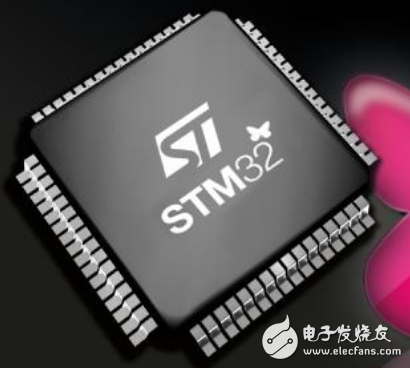The STM32's timer functions are very powerful. There are advanced timers such as TIME1 and TIME8, general-purpose timers such as TIME2~TIME5, and basic timers such as TIME6 and TIME7, watchdog timers, and system timebase timers.
Main functions of the basic timer (TIM6, TIM7): Only the most basic timing functions, the basic timers TIM6 and TIM7 each contain a 16-bit autoload counter, driven by their respective programmable prescalers.
The main functions of the general-purpose timer (TIM2~TIM5): In addition to the basic timer function, it also measures the pulse length of the input signal (input capture) or produces the output waveform (output compare and PWM).
The main functions of the advanced timer (TIM1, TIM8): The advanced timer not only has basic, all functions of the general-purpose timer, but also has all the functions of controlling the AC-DC motor. For example, you can output 6 complementary signals with dead zones. , brake function and more.
Two watchdog timers: independent watchdog, window watchdog.
System time base timer: SysTick, 24-bit down counter, automatic reload, often used to generate delay ms level, us level.

The STM32's general-purpose timer is a 16-bit auto-load counter (CNT) driven by a programmable prescaler (PSC). The STM32's general purpose timer can be used to measure the pulse length of an input signal (input capture) or to generate an output waveform (output compare and PWM). Each of the STM32's general purpose timers is completely independent and has no resources to share with each other.
The STM32's general purpose timer TIMx (TIM2, TIM3, TIM4 and TIM5) features include:
1) 16-bit up, down, up/down auto load counter (TIMx_CNT).
2) 16-bit programmable (can be modified in real time) prescaler (TIMx_PSC) , the division frequency of the counter clock frequency is any value between 1 and 65535.
3) 4 independent channels (TIMx_CH1~4), which can be used as:
A. Input capture
B. Output comparison
C. PWM generation (edge ​​or intermediate alignment mode)
D. Single pulse mode output
4) An external signal (TIMx_ETR) can be used to control the synchronization of the timer and timer interconnects (one timer can be used to control another timer).
5) Interrupt/DMA is generated when the following events occur:
A. Update: counter overflow/downflow, counter initialization (via software or internal/external trigger)
B. Trigger event (counter start, stop, initialize, or count by internal/external trigger)
C. Input capture
D. Output comparison
E. Support for incremental (quadrature) encoders and Hall sensor circuits for positioning
F. Trigger input as external clock or cycle current management

1) Automatic reload register (TIMx_ARR), which physically corresponds to 2 registers.
One is the programmer can directly operate, the other is not seen by the programmer, this invisible register is called the shadow register in the "STM32 Reference Manual". In fact, what really works is the shadow register. According to the setting of the APRE bit in the TIMx_CR1 register: APRE=0, the contents of the preload register can be transferred to the shadow register at any time, in which case the two are connected; and when APRE=1, in each update event (UEV) The contents preloaded in the register are transferred to the shadow register.
2) Prescaler register (TIMx_PSC), which is divided by the set clock and then supplied to the counter as the counter clock.
There are four clock sources for the timer:
a) internal clock (CK_INT)
b) External clock mode 1: external input pin (TIx)
c) External clock mode 2: External trigger input (ETR)
d) Internal Trigger Input (ITRx): Use the A timer as the prescaler for the B timer (A clocks for B).
These clocks, which can be selected by the relevant bits of the TIMx_SMCR register. The CK_INT clock here is multiplied from APB1. Unless the clock division number of APB1 is set to 1, the clock of the general-purpose timer TIMx is twice the APB1 clock. When the clock of APB1 is not divided, the general timing is used. The clock of the TIMx is equal to the clock of the APB1. It should also be noted here that the clock of the advanced timer is not from APB1 but from APB2.
3) Counter current value register (TIMx_CNT), this register is the counter of the timer, which stores the count value of the current timer.
4) Status register (TIMx_SR), which is used to mark whether various events/interrupts currently associated with the timer have occurred.
5) DMA/Interrupt Enable Register (TIMx_DIER)
3, stm32 general timer common library functionTimer parameter initialization:
Void TIM_TimeBaseInit(TIM_TypeDef* TIMx, TIM_TimeBaseInitTypeDef* TIM_TimeBaseInitStruct);
Timer enable function:
Void TIM_Cmd(TIM_TypeDef* TIMx, FunctionalStateNewState)
Timer interrupt enable function:
Void TIM_ITConfig(TIM_TypeDef* TIMx, uint16_t TIM_IT, FunctionalStateNewState);
Status flag acquisition and clearing
FlagStatusTIM_GetFlagStatus(TIM_TypeDef* TIMx, uint16_t TIM_FLAG);
Void TIM_ClearFlag(TIM_TypeDef* TIMx, uint16_t TIM_FLAG);
ITStatusTIM_GetITStatus(TIM_TypeDef* TIMx, uint16_t TIM_IT);
Void TIM_ClearITPendingBit(TIM_TypeDef* TIMx, uint16_t TIM_IT)
It includes Light sources, terminals, sensors, converters, adapters, light boxes, inductive ballasts, electronic ballasts, acrylic accessories, plastic accessories, special lamps, filaments, electronic components, capacitors, brackets, hardware, ceramic parts, Plastic parts, glass parts, die-casting parts, rectifiers, starters, transformers, voltage stabilizers, wires, sockets, plugs, switches, lamp holders, lamp holders, lamp panels, optical fibers, crystal parts, lamp tubes, lamp posts, lamp shades, Base, center pillar, bulb, ballast, bottom plate. According to different protection requirements, there are many small accessories. Such as rubber plugs, eight-shaped buckles, terminals, crimping buckles, pipe plugs, dental pipe screws, gaskets and so on.:Hard wire straight plug, soft and hard wire universal, push type, track type, waterproof series, etc.
Our factory includes PCT41 series Cage Spring Terminal Blocks,CH Series Press Type Terminal Block etc.
PCT41 series Cage Spring Terminal Blocks,CH Series Press Type Terminal Block etc
Ningbo Bond Industrial Electric Co., Ltd. , https://www.bondelectro.com